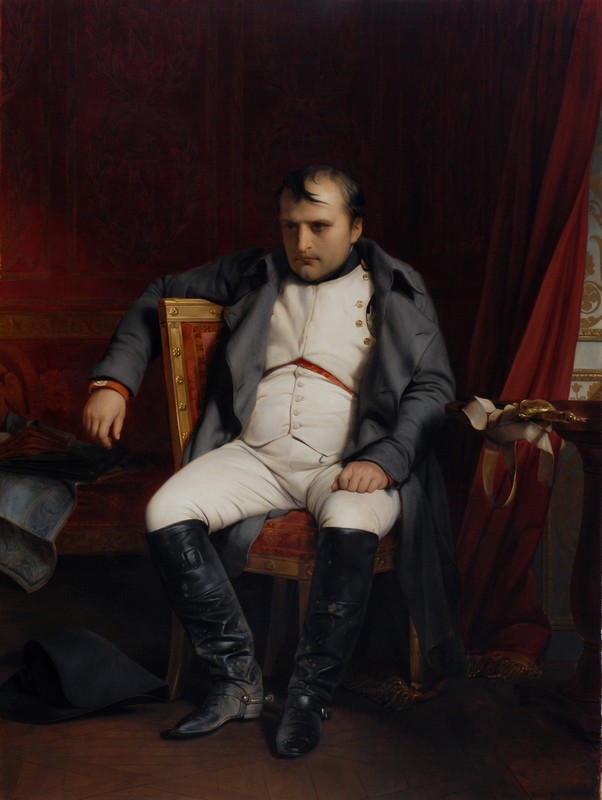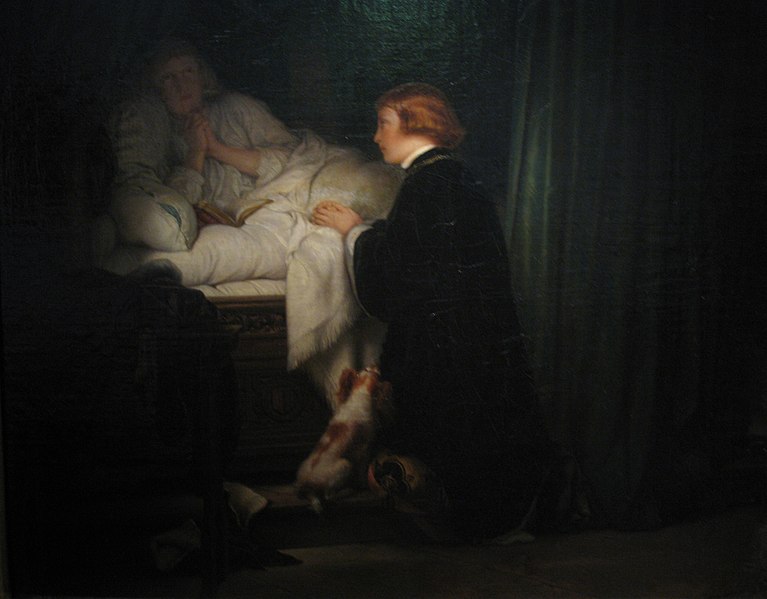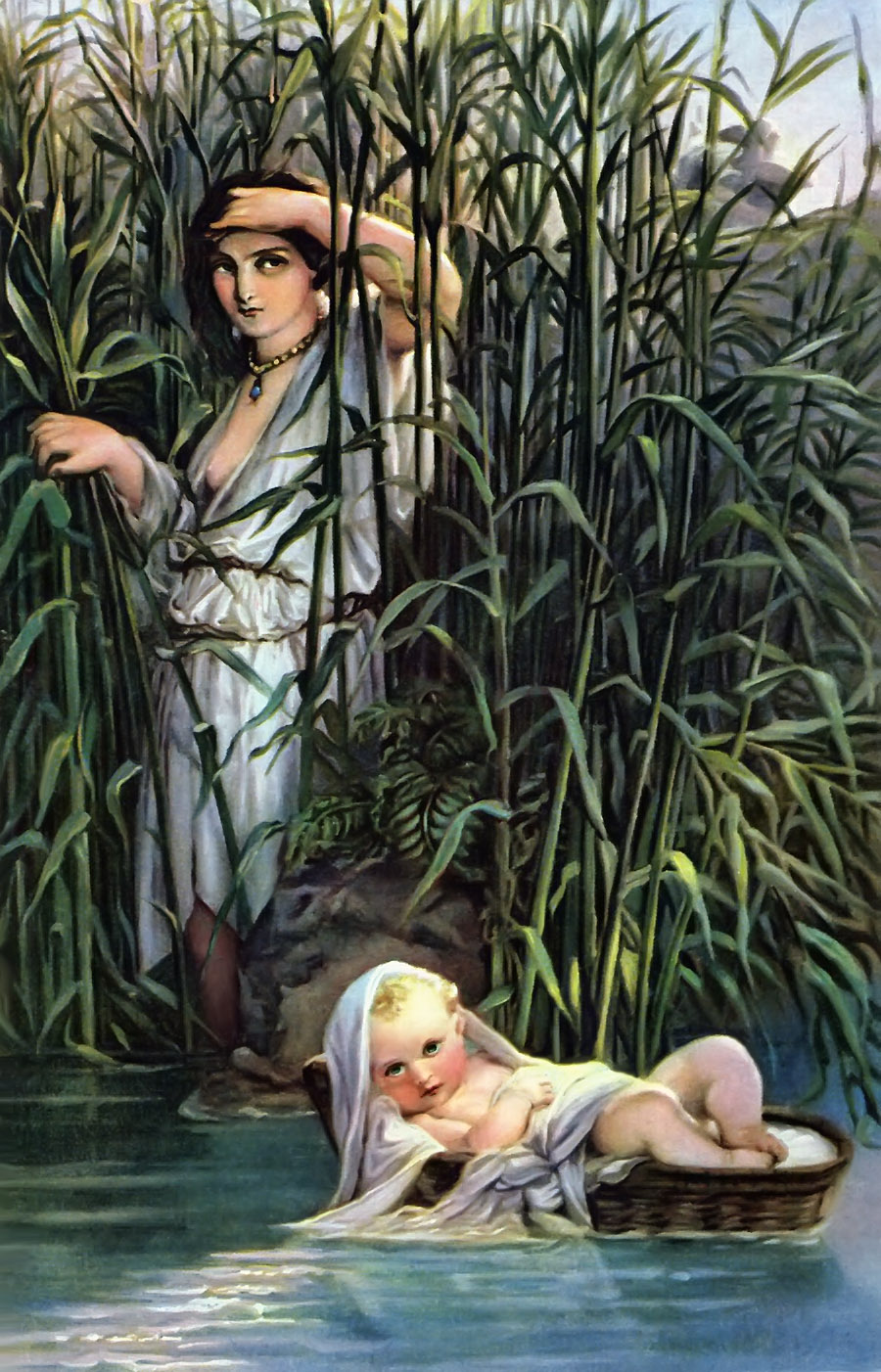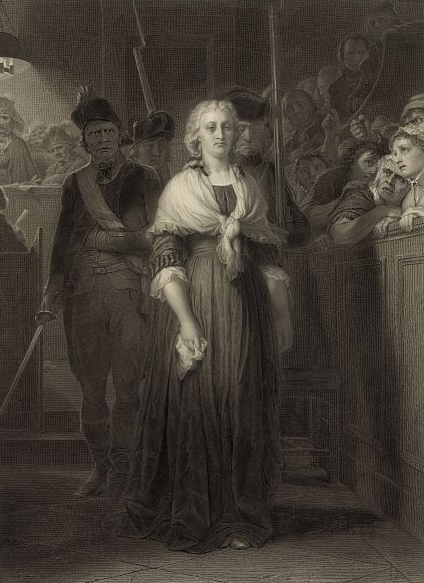French Painters: Paul DELAROCHE
Hippolyte Delaroche (17 July 1797 – 4 November 1856), commonly known as Paul Delaroche, was a French painter born in Paris.*
Delaroche was born into a wealthy family and was trained by Antoine-Jean, Baron Gros, who then painted life-size histories and had many students.The first Delaroche picture exhibited was the large Josabeth saving Joas (1822). This exhibition led to his acquaintance with Théodore Géricault and Eugène Delacroix, with whom he became friends. The three of them formed the core of a large group of Parisian historical painters. He visited Italy in 1838 and 1843, when his father-in-law, Horace Vernet, was director of the French Academy in Rome.Delaroche's studio in Paris was in the Rue Mazarine. His subjects were painted with a firm, solid, smooth surface, which gave an appearance of the highest finish. This texture was the manner of the day and was also found in the works of Vernet, Ary Scheffer, Louis Léopold Robert and Jean Auguste Dominique Ingres. Among his students were British landscape artist Henry Mark Anthony (1817–1886), British history painter Edward Armitage R.A. (1817–1896) and American painter/photographer Alfred L. Boisseau (1823–1901).Delaroche's paintings, with their straightforward technique and dramatic compositions, became very popular. He applied essentially the same treatment to the characters of distant historical times, the founders of Christianity, and various figures of his own day such as "Napoleon at Fontainebleau," "Napoleon at St Helena," or "Marie Antoinette leaving the Convention after her sentence."His dramatic paintings include Strafford Led to Execution, depicting the English Archbishop Laud stretching his arms out of the small high window of his cell to bless Thomas Wentworth, 1st Earl of Strafford, as Strafford passes along the corridor to be executed, and the Assassination of the duc de Guise at Blois. Another famous work shows Cardinal Richelieu in a gorgeous barge, preceding the boat carrying Cinq-Mars and De Thou carried to their execution. Other important Delaroche works include The Princes in the Tower and the La Jeune Martyre (showing a young female martyr floating dead on the Tiber).Delaroche's work was sometimes ahistorical. Cromwell lifting the Coffin-lid and looking at the Body of Charles is based on an urban legend, and The Execution of Lady Jane Grey is represented as taking place in a dungeon, which is badly inaccurate. He tended to care more about dramatic effect than historical truth: see also The King in the Guardroom, where villainous Puritan soldiers blow tobacco smoke in the face of King Charles, and Queen Elizabeth Dying on the Ground.Delaroche's love for Horace Vernet's young daughter Louise was the absorbing passion of his life. In 1835, he exhibited Head of an Angel, which was based on a study of her. It is said that Delaroche never recovered from the shock of her 1845 death. After her loss he produced a sequence of small elaborate pictures of incidents in Jesus Passion. He focused attention on the human drama of the Passion, as in a painting where Mary and the apostles hear the crowd cheering Jesus on the Via Dolorosa, and another where St. John escorts Mary home after her son's death.In 1837 Delaroche received the commission for the great picture the Hémicycle, 27 metres (88.5 ft) long, a mural in the hemicycle of the award theatre of the École des Beaux Arts. The commission came from the École's architect, Félix Duban. The painting represents seventy-five great artists of all ages, in conversation, assembled in groups on either hand of a central elevation of white marble steps, on the topmost of which are three thrones filled by the creators of the Parthenon: architect Phidias, sculptor Ictinus, and painter Apelles, symbolizing the unity of these arts.To supply the female element in this vast composition he introduced the genii or muses, who symbolize or reign over the arts, leaning against the balustrade of the steps, depicted as idealized female figures. The painting is done directly on the wall, in oil paints. Delaroche finished the work in 1841, but it was considerably damaged by a fire in 1855. He immediately set about trying to re-paint and restore the work, but died on 4 November 1856, before he had accomplished much of this. The restoration was finished by Joseph-Nicolas Robert-Fleury.- 1822 -Fra Filippo Lippi Falling in Love with his Model*- 1824 -Joan of Arc in Prison*- 1828 -The Death of Elizabeth*- 1829 -The State Barge of Cardinal Richelieu on the Rhone*Portrait of Claude-Emmanuel Pierre, marquis de Pastoret- 1830 -Cardinal Mazarin Dying- 1831 -King Edward V and the Duke of York in the Tower of London- 1834 -The Execution of Lady Jane Grey*The Execution of Lady Jane Grey (Detail)*L'Assassinat du Duc de Guise*Camoldine Monk- 1836 -Strafford*Saint Cecilia and the Angels*- 1837 -Central portion of L'Hémicycle des Beaux-artsL'Hémicycle des Beaux-arts (Detail)*L'Hémicycle des Beaux-arts (Detail)*Francois Guizot*- 1838 -Peter the Great of Russia*Portrait of a Woman- 1842 -Childhood of Pico della Mirandola*- 1843 -Herodias*- 1844 -Virgin and Child- 1845 -Charles de Remusat*Napoléon Bonaparte abdicated in Fontainebleau*Napoleon at Fontainebleau*Girl in a Basin*- 1846 -Portrait of Comte James-Alexandre de Pourtzalès-Gogier*Comte Narcisse-Achille de Salvandy
*- 1844-1847 -A Family Scene*- 1848 -A Child Learning to Read*Napoleon Crossing the Alps*- 1849 -Portrait of Delfina Potocka*Cromwell before the Coffin of Charles I*- 1852 -Children of King Eduard IV*- 1855 -Young Christian Martyr- 1857 -Moses in the Bulrushes*Marie Antoinette Leaving the Convention After her Sentence*- Undated -Portrait of Henrietta SontagMother and ChildNapoleon Bonaparte*Resting on the Banks of the Tiber*
Angel’s Head
*Jeune Fille à la Balançoire
*L'Art Gothique ou le Moyen-Age
*La Renaissance
*Un Apôtre
*Léonard de Vinci
*Portrait de Monsieur Jules Jauvin d'Attainville
*
Biographie en Français :Paul Delaroche, né Hippolyte De La Roche 1 le 17 juillet 1797 à Paris où il est mort le 4 novembre 1856, est un peintre français.Elève d'Antoine-Jean Gros, il débute au Salon de 1822, où son talent est remarqué par Théodore Géricault. Il y expose ensuite régulièrement des scènes historiques : Filippo Lippi et Lucrezia, Jeanne d’Arc (1824), La Mort d’Elizabeth d’Angleterre (1827).Sa notoriété s'accroît à partir de 1830, avec des œuvres dont le romantisme s’arrête au sujet, pour se figer dans une facture probe et retenue, faite pour séduire la société bourgeoise au pouvoir, dite du "juste milieu". Ainsi se succèdent les scènes historiques (surtout centrées sur l'histoire d'Angleterre) à forte teneur émotionnelle : Cromwell devant le cercueil de Charles Ier, Les Enfants d’Edouard (1831), L'Exécution de Jane Grey (1834), L’Assasinat du duc de Guise (1835), ou parfois comiques, comme dans le fameux Bonaparte franchissant les Alpes (1848), qui représente l'empereur à dos de mulet, antithèse de la toile de David.Entre classicisme (notamment par le réalisme des détails propre à la peinture de genre et le fini parfait du style) et romantisme, Paul Delaroche est entraîné vers l’académisme dans ses tableaux de chevalet comme dans ses décorations murales, en particulier celui peint pour l’hémicycle de l’école des Beaux-Arts (1837-1841), qui rassemble les plus grands artistes et penseurs depuis l'Antiquité. Ses tableaux religieux (La Jeune Martyre, 1855 ; Sainte Véronique, 1856) et ses portraits (Louise Vernet, femme de l'artiste, sur son lit de mort, 1854) font son succès.Les œuvres de Paul Delaroche connurent une large diffusion au XIXe siècle grâce à la reproduction, gravée ou photographique, à laquelle s'adaptait parfaitement son art, soucieux de l’exactitude historique du décor et du costume.
































































Комментариев нет:
Отправить комментарий